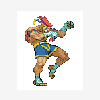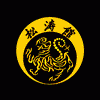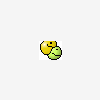Jacekx napisal:
Kyokushin Karate participates in San Shou Exchange Tournament
Kancho Hatsuo Royama and Shihan Tsuyoshi Hiroshige visited Beijing from June 23rd to 28th 2004 in response to a formal invitation last October from the Official Chinese Martial Arts Association. The objective was to discuss ongoing exchange, especially the idea of a series of tournaments between Kyokushin Karate and Chinese Kung Fu, in the form of Sanda, or San Shou as it is often know in the West. As Kyokushin Karate was until now completely unknown in China, Kancho Royama saw this as an excellent opportunity to formally take our first steps to introducing our karate to the original home of Japanese martial arts and thus encourage ongoing strong cultural ties between China and Japan based on the common ground of the martial arts.
The invitation this time was for a team of five competitors for an exchange tournament fighting under the Sanda/San Shou rules. This meant in a ring with gloves, the rules being very similar to those of Shootboxing (kickboxing with throws and takedowns, although no grappling on the ground). Five up-and-coming Kyokushin students were chosen, although at the last moment one was injured and so was replaced by a fighter from Kazakhstan. Of course for these fighters, it was their first experience competing under San Shou rules, in fact in a ring with gloves, so for the month leading up to the event, they trained as best as possible according to these rules. As it turned out, their opponents were all highly experienced San Shou All-China Champions and the renowned fighter in the 80kg division known in China as the "Champion of Champions".
The challenge was huge and all fighters displayed characteristically strong Kyokushin spirit that the crowd (and the officials) went wild over. But the Kyokushin fighters were vastly outclassed and despite their courage were defeated 5-0. In addition, reports in the media stated that the San Shou fighters met with opponents who showed far more resilience, courage and skill than they had expected. As a result, Kancho Royama received an invitation to return again early next year for yet another exchange tournament.
"This time, we got to compete against the best of the best in China and feel their strength and skill," commented Kancho Royama. "Next time, armed with the experience and knowledge gained, we will be well prepared to be victorious."
How does Kyokushin Karate differ from San Shou? Journalists sent from China to report on the Kyokushin-Kan Children's Championships and All-Japan Weight Division Tournament in May this year commented that the Budo Karate philosophy of the Martial Way beginning and ending with courtesy was very clearly displayed at the tournament in Japan and is perhaps one reason why karate has become so popular in every society of the world. In addition, the marketing and staging of the San Shou event were very strongly influenced by what the Chinese visitors saw in Japan and the response received to the televising of the event was outstanding.
The issue now at hand for the San Shou Federation is exactly how they can go about popularizing San Shou on a worldwide scale along the lines of karate. Especially, there is a very strong possibility that Chinese Kung Fu will be a demonstration event at the 2008 Beijing Olympics and that would include San Shou.
The next San Shou Cultural Exchange Tournament is due to be held in Shanghai or Guangzhou Province and the Kyokushin-Kan is keen to avenge the recent loss.
Following the San Shou event, Kancho Royama and Kyokushin-Kan Vice Chairman Shihan Tsuyoshi Hiroshige were presented with an official plaque from the Governmental Office of Foushan City formally honoring them as the first ever Japanese Karate Exchange Affiliates. As well, in later discussions with Mr Wang, Chairman of the Foushan Governmental Board, Kancho Royama realized that they were in complete agreement with their desire to continue to broaden and cultivate a strong future of cultural exchange between Japan and China based on the martial arts.
To that end, our objectives were not completely selfish. This time's challenge was also aimed at being the first step in the building of this ongoing cultural bridge between China and Japan. In addition, this was the first real opportunity to introduce Kyokushin Karate to China, whose population makes up about one fifth of the entire world. In that respect, I believe the role played by this Kyokushin/ San Shou Exchange was vital.
Pozdrawiam









 FaceBook
FaceBook




